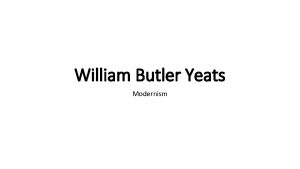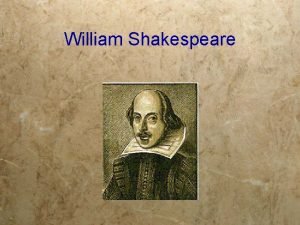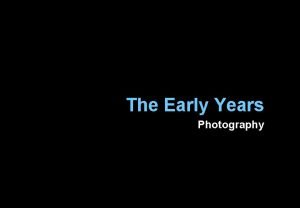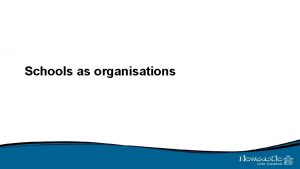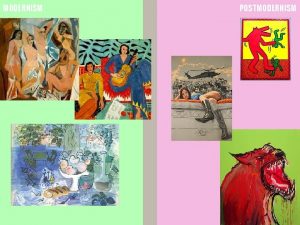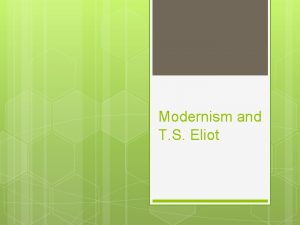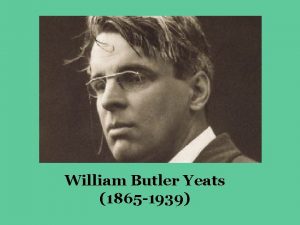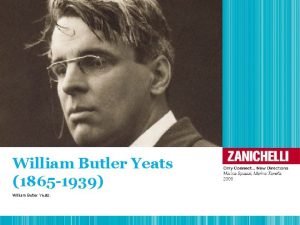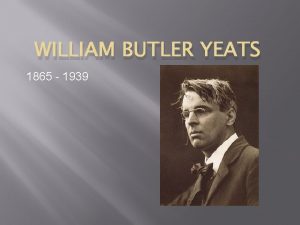Yeats Eliot High Modernism High Modernism Early years







- Slides: 7

Yeats & Eliot High Modernism

“High” Modernism Early years of 20 th century, particularly during WWI and inter-war period Emphasis on European culture (many Americans were expatriates) Fragmentation: abrupt shifts in perspective, tone, voice; emphasis on discontinuity and disunity Obscure symbolism, often alludes to mythology, religion, or earlier world literature Transformation of (traditional) society; images of loss & ruin Breakdown of aesthetic, social, political orders Self-reflexiveness, aware of art’s place/role within society

The Second Coming Turning and turning in the widening gyre The falcon cannot hear the falconer; Things fall apart; the centre cannot hold; Mere anarchy is loosed upon the world, The blood-dimmed tide is loosed, and everywhere The ceremony of innocence is drowned; The best lack all conviction, while the worst Are full of passionate intensity. Surely some revelation is at hand; Surely the Second Coming is at hand. The Second Coming! Hardly are those words out When a vast image out of Spiritus Mundi Troubles my sight: a waste of desert sand; A shape with lion body and the head of a man, A gaze blank and pitiless as the sun, Is moving its slow thighs, while all about it Wind shadows of the indignant desert birds. The darkness drops again but now I know That twenty centuries of stony sleep Were vexed to nightmare by a rocking cradle, And what rough beast, its hour come round at last, Slouches towards Bethlehem to be born?

Leda and the Swan A sudden blow: the great wings beating still Above the staggering girl, her thighs caressed By the dark webs, her nape caught in his bill, He holds her helpless breast upon his breast. How can those terrified vague fingers push The feathered glory from her loosening thighs? And how can body, laid in that white rush, But feel the strange heart beating where it lies? A shudder in the loins engenders there The broken wall, the burning roof and tower And Agamemnon dead. Being so caught up, So mastered by the brute blood of the air, Did she put on his knowledge with his power Before the indifferent beak could let her drop?

TS Eliot From “Hamlet and His Problems” (1921) The only way of expressing emotion in the form of art is by finding an “objective correlative”; in other words, a set of objects, a situation, a chain of events which shall be the formula of that particular emotion; such that when the external facts, which must terminate in sensory experience, are given, the emotion is immediately evoked. If you examine any of Shakespeare’s more successful tragedies, you will find this exact equivalence; you will find that the state of mind of Lady Macbeth walking in her sleep has been communicated to you by a skillful accumulation of imagined sensory impressions…The artistic “inevitability” lies in this complete adequacy of the external to the emotion; and this is precisely what is deficient in Hamlet.

The Love Song of J. Alfred Prufrock https: //www. youtube. com/watch? v=JAO 3 QTU 4 Pz. Y

The Hollow Men https: //www. youtube. com/watch? v=IPe. HO 1 r 8 pa. U
